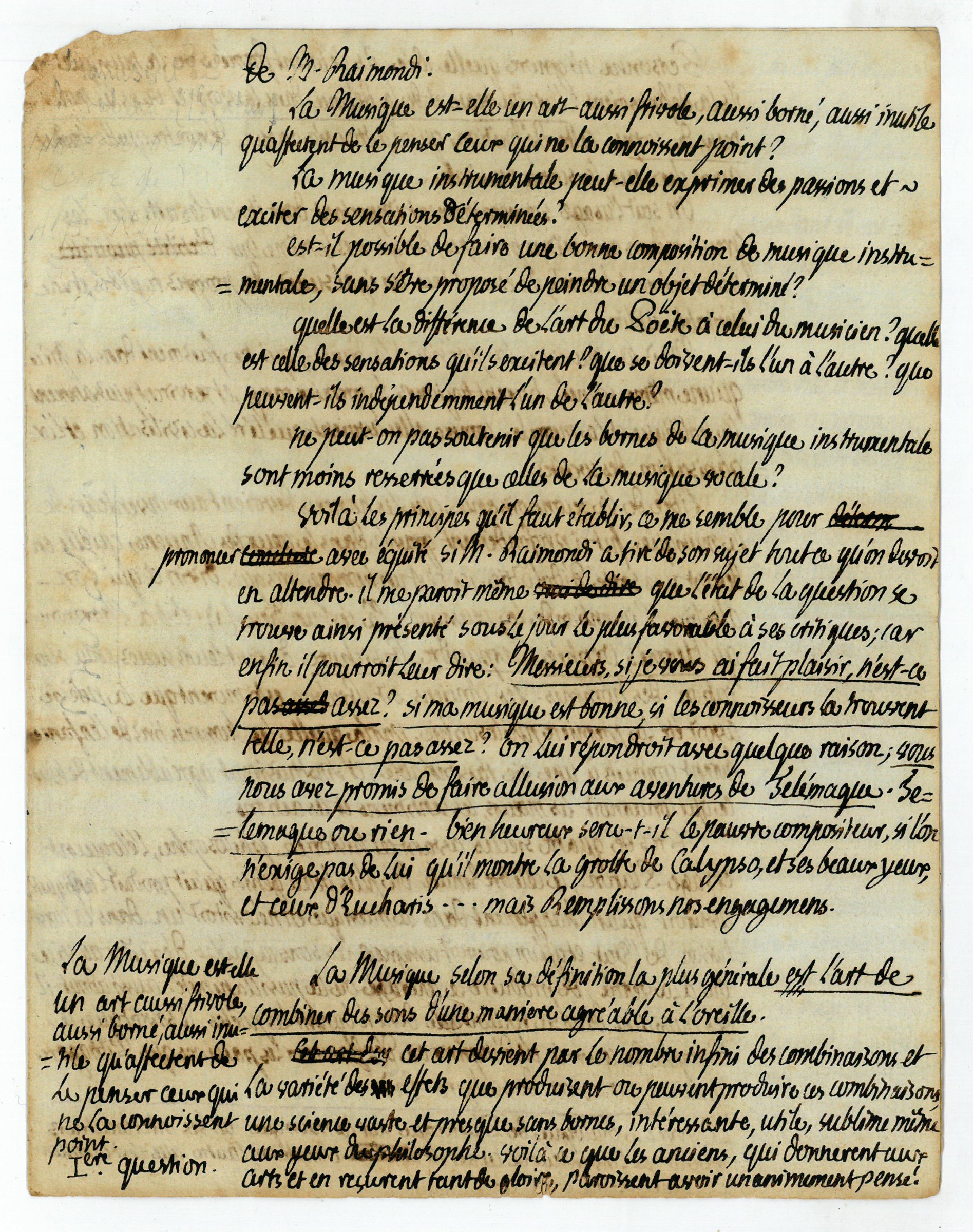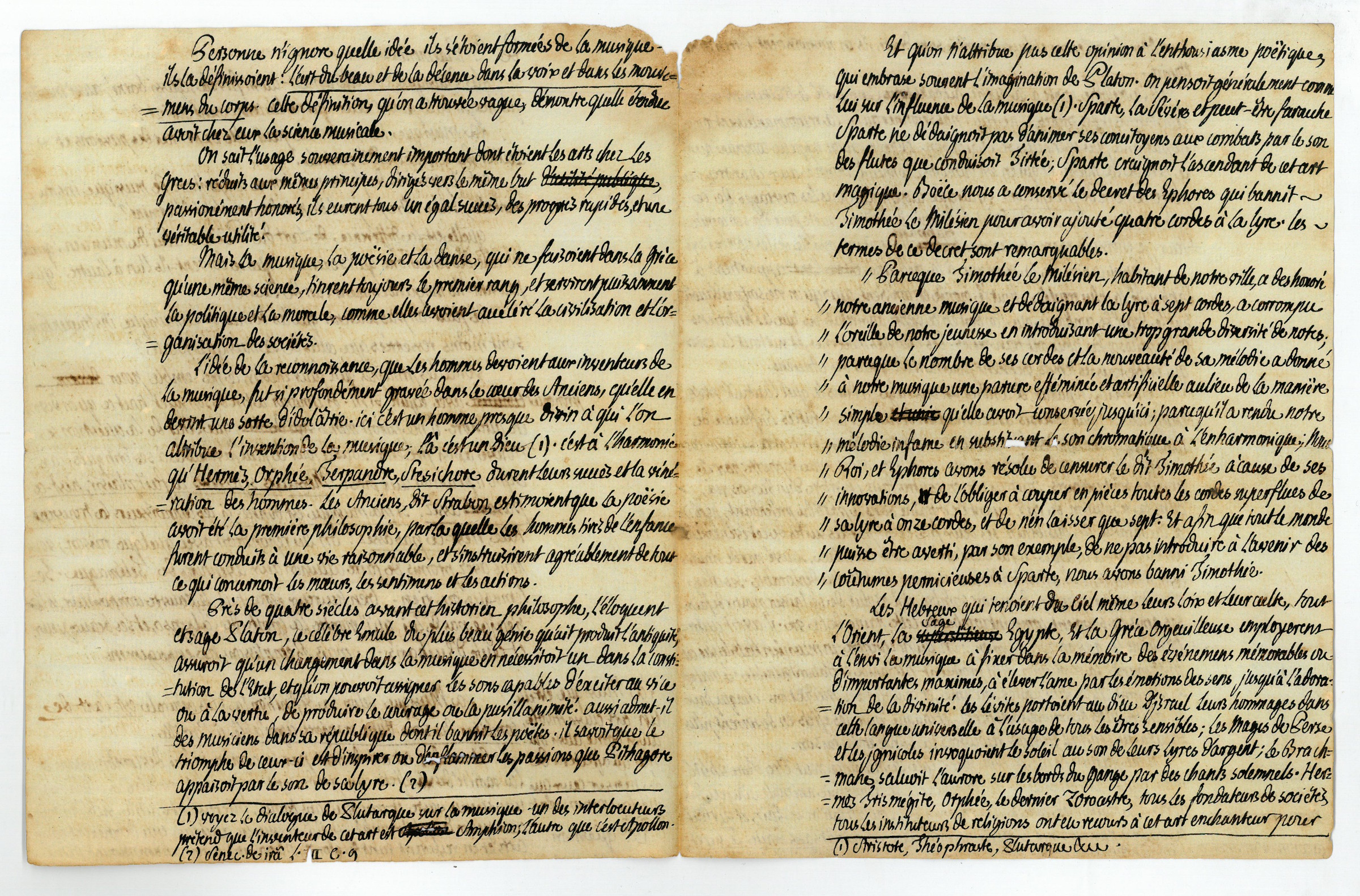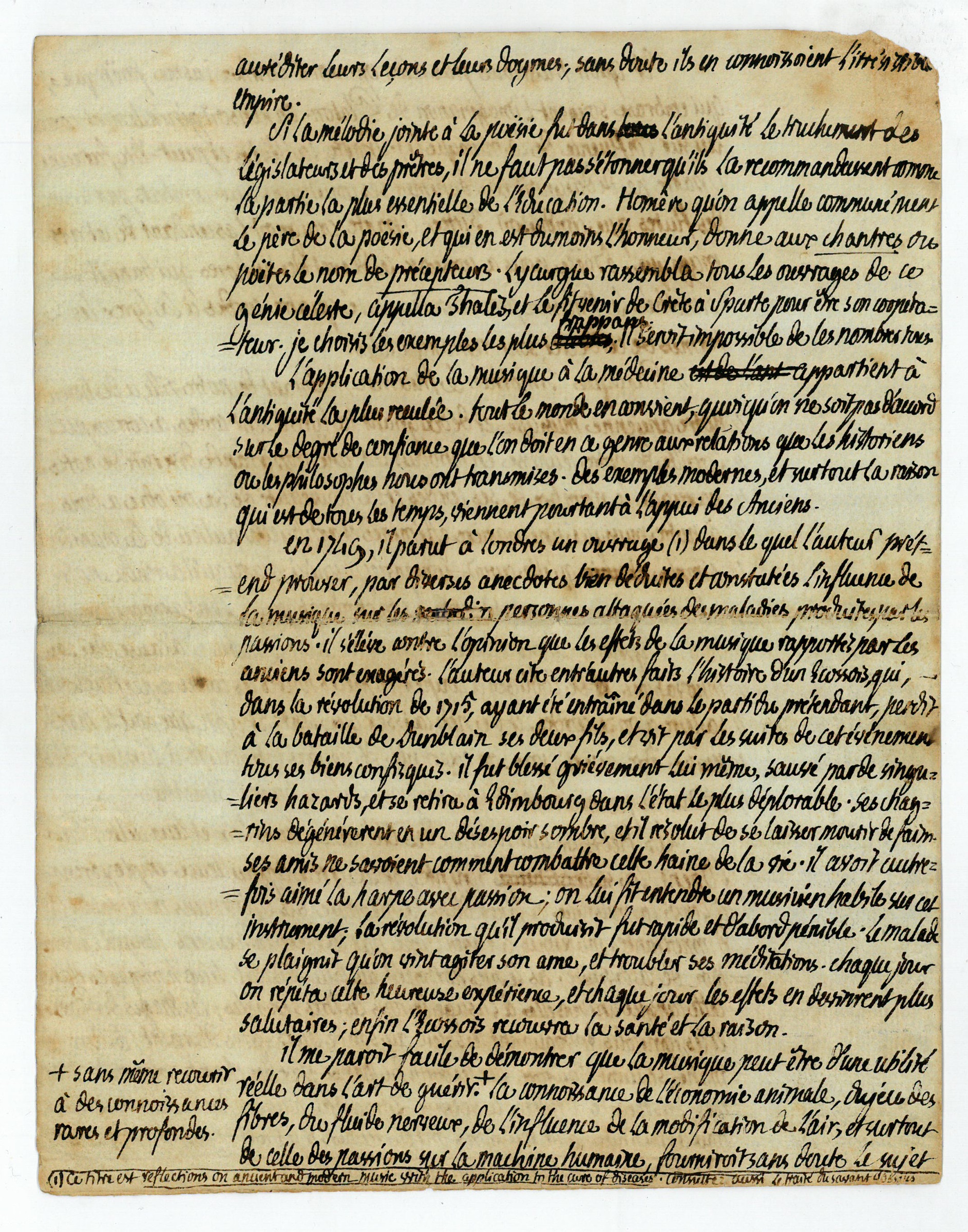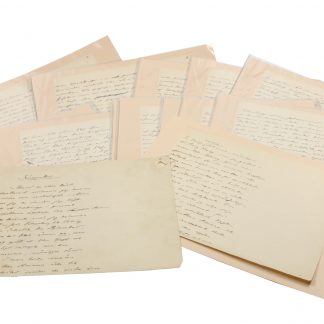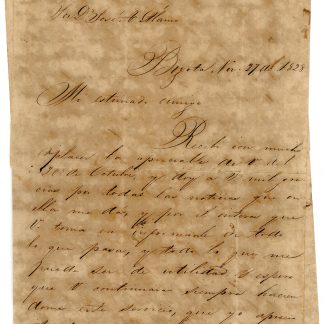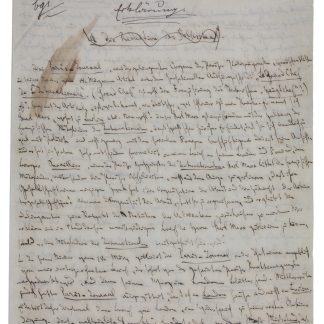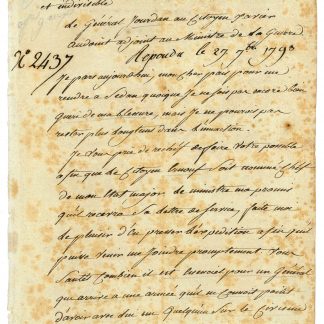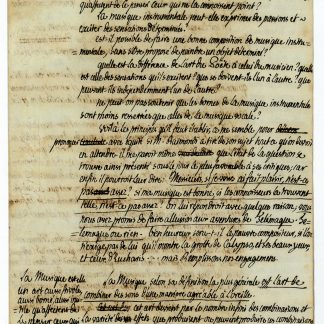"Le lecteur y mettra le titre". Autograph manuscript (fragment).
Small 4to. 4 pp. on bifolium.
€ 6.500,00
This beautiful manuscript corresponds with pages 17 (3rd paragraph) to 24 (1st line) of the 1777 publication of Mirabeau's defence of instrumental music, "Le lecteur y mettra le titre". Published anonymously and giving London as a fictitious place of printing, Mirabeau was previously identified as the author of the text based on two letters. The manuscript in Mirabeau's hand confirms his authorship beyond any doubt.
The text was written in Amsterdam, just before Mirabeau's arrest and four-year imprisonment in Vincennes, under the impression of a performance of Ignazio Raimondi's symphony "Les aventures de Télémaque dans l'isle de Calypso". The manuscript contains several revisions and changes that were adopted for the publication, while small discrepancies remain unaccounted for. It comprises Mirabeau's central questions, a general definition of music as "the art of combining sounds in a manner that is pleasing to the ear", and parts of his historical argument.
Mirabeau, who had no musical education, adopts the rhetorics of the paragone, opposing vocal music and instrumental music in order to determine which is superior in expressing emotions. While the development of the argument and Mirabeau's historical references are quite traditional, the defence of instrumental music and his assertion that it is more expressive in terms of conveying emotions, even if vocal music can offer a narrative based on texts, is unique in its time and appears to anticipate the Romantic predilection for programme music. The Neapolitan violonist and composer Ignazio Raimondi (ca. 1735-1813) was a student of Emanuele Barbella and member of the orchestra of the Teatro di San Carlo before moving to Amsterdam in 1762, where he was a successful soloist and impresario. From 1785, Raimondi was mostly active in London, where he died in 1813.
Some browning and some damage due to ink corrosion, several tears partly affecting the text (one professionally restored).
Le lecteur y mettra le titre, Londres [i.e., Paris, s.n.], 1777. Cf. Bellinda Cannone, Le lecteur y mettra le titre. Un pamphlet de Mirabeau en faveur de la musique instrumentale, in: Dix-Huitième Siècle 20 (1988), pp. 403-414.

